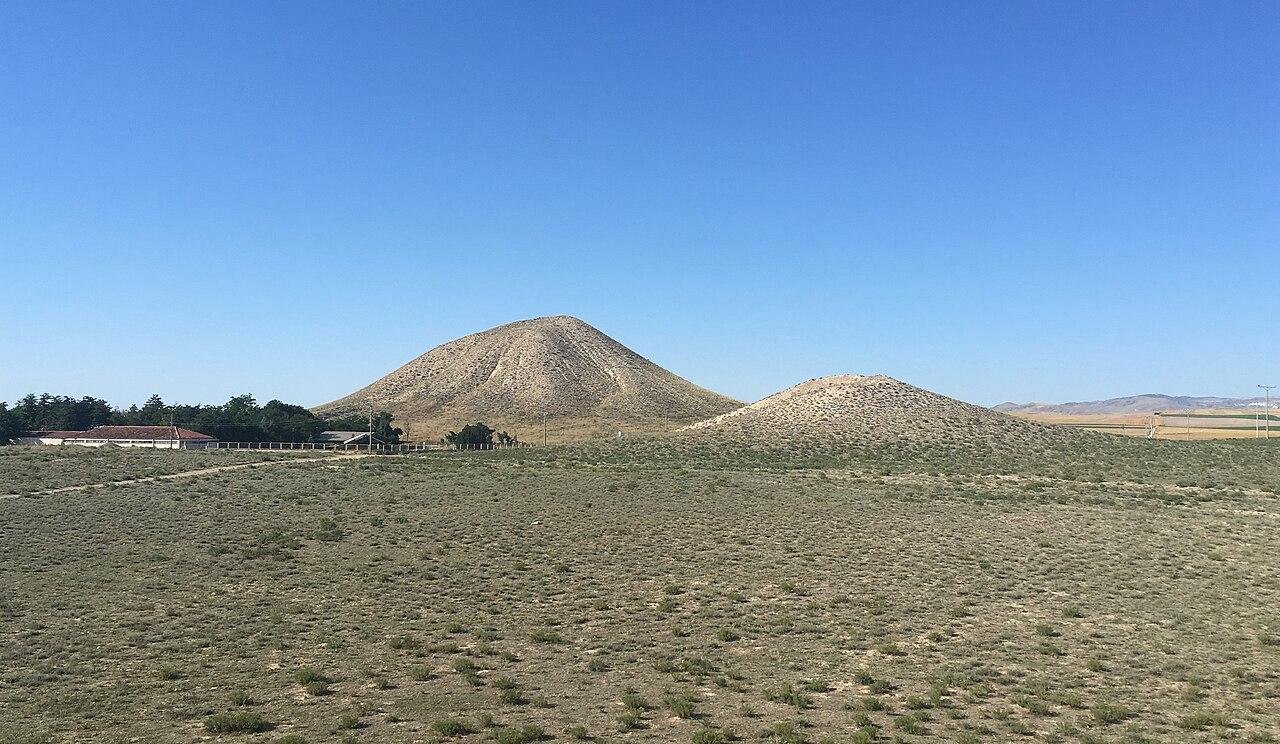In the rolling hills of Gordion , an ancient city located southwest of Ankara in Turkey , archaeologists have made a discovery that may connect to one of the most legendary figures of the ancient world. As the heart of the Phrygian kingdom , Gordion has long been known for its monumental mounds and rich archaeological history. However, the latest excavation could be its most significant yet, with a newly uncovered royal tomb potentially belonging to a relative of the mythic King Midas .
An Intriguing Discovery at Gordion
Gordion, the ancient capital of the Phrygian kingdom , has long captivated researchers. The site, surrounded by a series of burial mounds and fortifications, was once a bustling center of power in Anatolia , strategically located along the major trade routes of the ancient world.
Recent excavations have revealed an 8th-century BC royal tomb beneath a large burial mound. Standing about 8 meters tall and 60 meters in diameter, this mound houses a burial chamber that was likely constructed with wood , though much of the structure has since collapsed. Still, archaeologists have uncovered a wealth of items inside the chamber.
Among the artifacts found were dozens of rare bronze items , including cauldrons, jugs, incense burners, and other ceremonial vessels . These items reflect the high status of the individual buried within, suggesting they were closely tied to the elite circles of the Phrygian kingdom. Mehmet Nuri Ersoy , Turkey’s Minister of Culture and Tourism, highlighted the significance of the find, pointing out that these artifacts were among the most remarkable discoveries made in the region since the excavation began.

The Royal Connection: Who Could Be Buried Here?
The most striking aspect of this discovery lies in the possibility that the tomb might belong to a relative of King Midas. Gordion is famously associated with Midas , the king whose legend of turning everything he touched into gold has captivated imaginations for centuries. The newly discovered tomb is located near the Midas Mound , thought to be the burial site of Midas’ father, Gordias . This proximity suggests that the tomb could belong to someone from Midas’ royal family .
C. Brian Rose , co-director of the Gordion excavation and an archaeologist at the University of Pennsylvania , commented on the possibility, stating, “It’s possible that it belonged to someone in Midas’s family because his tumulus is nearby.” He noted that the objects discovered in the tomb bear striking similarities to those found in Midas’ own burial site. These parallels further strengthen the hypothesis that the tomb might house the remains of a royal family member .

Cremation: A Surprising Ritual for the Phrygians
In addition to the royal connection, the discovery of cremated remains inside the tomb offers new insights into Phrygian burial customs. Cremation was not a common practice among the Phrygians, who typically preferred inhumation . The presence of cremated remains is especially significant, as it marks the first known case of cremation among the Phrygians at Gordion .
Professor Yücel Şenyurt , the lead archaeologist at Gordion’s excavation, explained that the discovery “shows the burial customs of the Phrygians” and noted the unique nature of this burial, calling it “the first known case of cremation among the Phrygians.” This deviation from traditional burial customs adds an intriguing layer to the understanding of the Phrygian culture and suggests that, like many ancient societies, burial practices could vary depending on the individual’s social status or role in society.

Preserving the Past: Artifacts and Textiles
Among the most remarkable finds were the well-preserved bronze artifacts and, most notably, a bronze jug wrapped in linen . The jug represents a rare example of textile preservation , a testament to the ingenuity of the Phrygians and the exceptional conditions of the tomb. Over 100 items were recovered, and conservation efforts are already underway. Many of the artifacts are currently displayed at the Gordion Museum , where they are carefully preserved before being showcased to the public.
The discovery is considered one of the most important in recent years, shedding new light on Phrygian craftsmanship and their funerary practices. The chamber also contained a series of bronze vessels and ceremonial items that are similar to those discovered at the Midas Mound , which further suggests a link between this burial and the royal family .
Gordion’s Ongoing Secrets
Gordion, now recognized as a UNESCO World Heritage site , continues to offer up its ancient secrets. The excavation has been ongoing for over 75 years, and archaeologists believe there is much more to be uncovered. Despite the extensive work already completed, much of the site remains unexplored, promising further revelations about this long-lost civilization.
As archaeologists continue to dig through the mounds and uncover new artifacts , the connection between Gordion, King Midas, and the wider Phrygian kingdom becomes clearer. The discovery of this royal tomb is yet another step toward piecing together the complex and fascinating history of the Phrygians and their place in the ancient world.
Enjoyed this article? Subscribe to our free Newsletter for engaging stories, exclusive content, and the latest news
For more news like this, visit Indiandefencereview.com

Posting Komentar